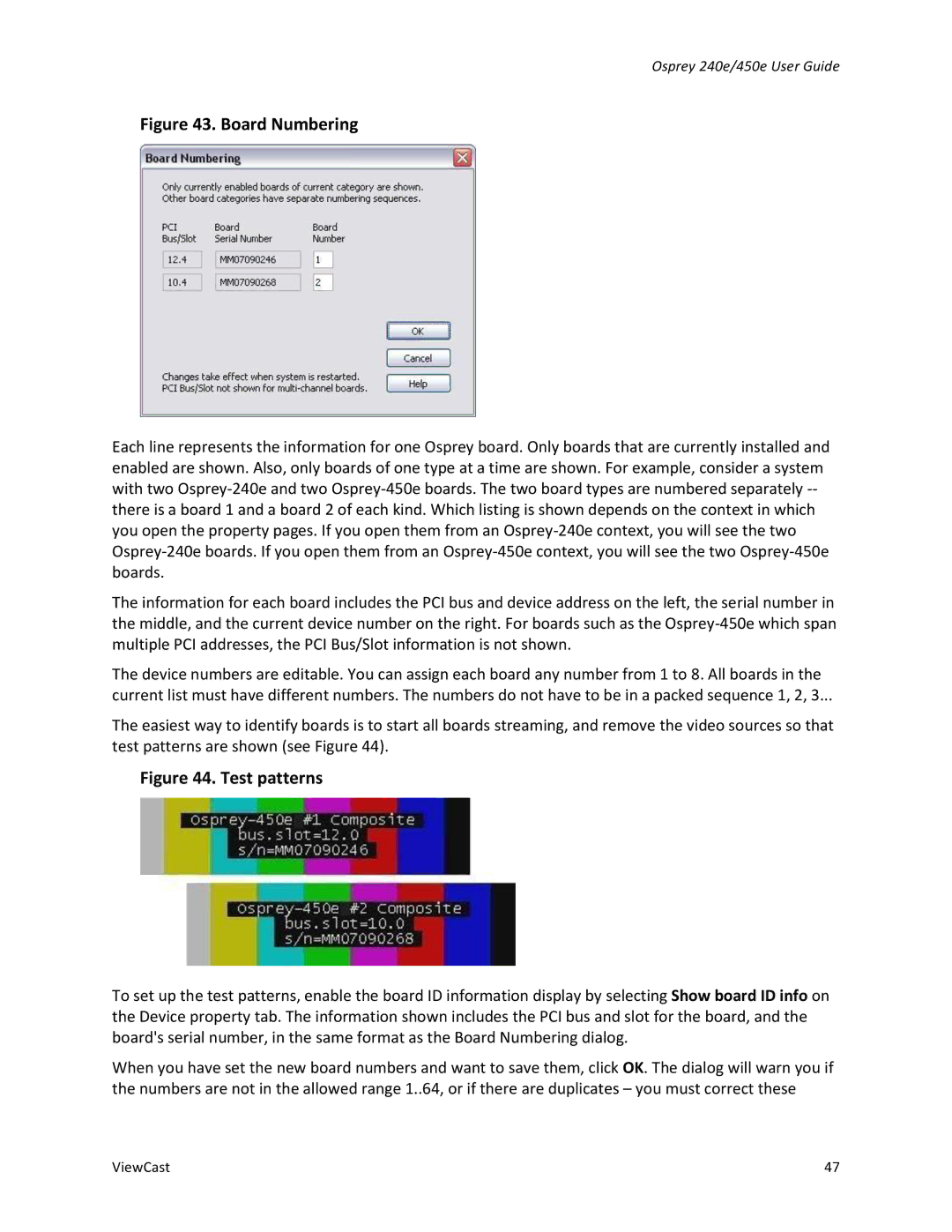
Osprey 240e/450e User Guide
Figure 43. Board Numbering
Each line represents the information for one Osprey board. Only boards that are currently installed and enabled are shown. Also, only boards of one type at a time are shown. For example, consider a system with two
The information for each board includes the PCI bus and device address on the left, the serial number in the middle, and the current device number on the right. For boards such as the
The device numbers are editable. You can assign each board any number from 1 to 8. All boards in the
current list must have different numbers. The numbers do not have to be in a packed sequence 1, 2, 3...
The easiest way to identify boards is to start all boards streaming, and remove the video sources so that test patterns are shown (see Figure 44).
Figure 44. Test patterns
To set up the test patterns, enable the board ID information display by selecting Show board ID info on the Device property tab. The information shown includes the PCI bus and slot for the board, and the board's serial number, in the same format as the Board Numbering dialog.
When you have set the new board numbers and want to save them, click OK. The dialog will warn you if the numbers are not in the allowed range 1..64, or if there are duplicates – you must correct these
ViewCast | 47 |
